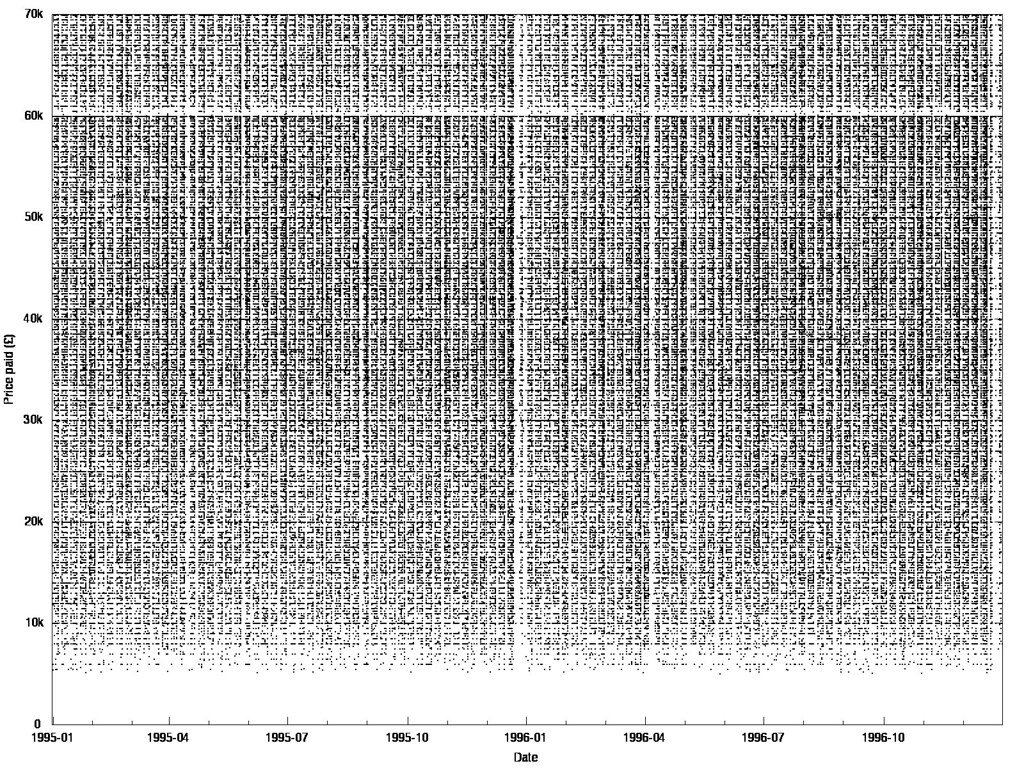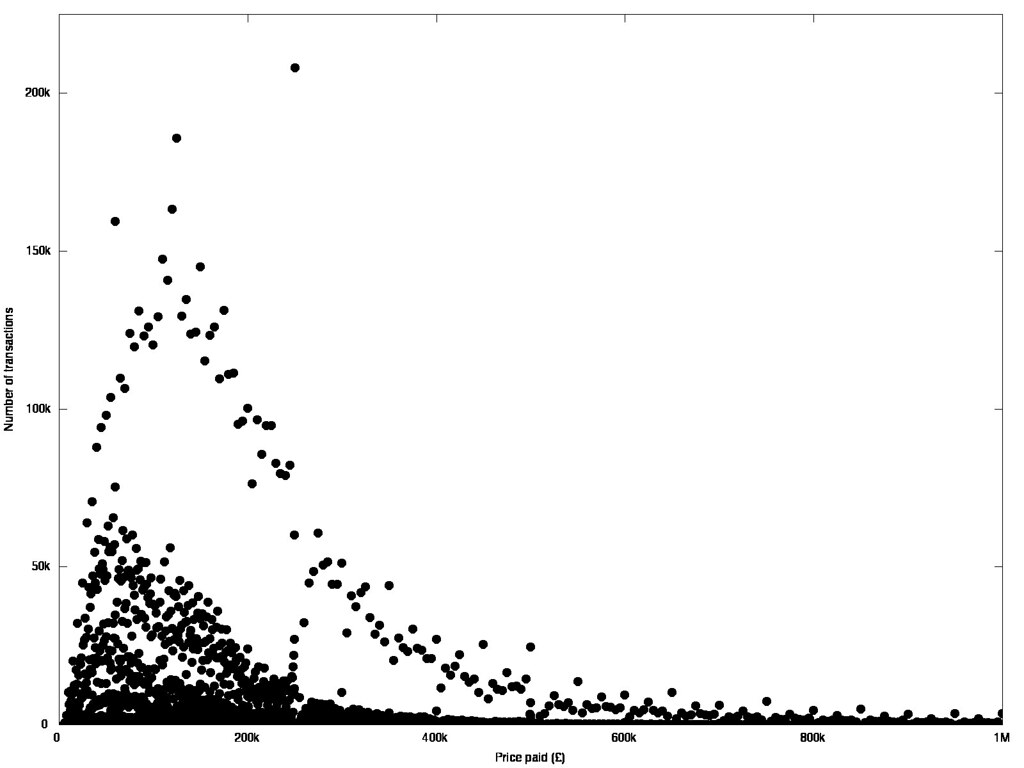This is day 6 of "One CSV, 30 stories":http://blog.whatfettle.com/2014/10/13/one-csv-thirty-stories/ a series of articles exploring "price paid data":https://www.gov.uk/government/statistical-data-sets/price-paid-data-downloads from the Land Registry found on GOV.UK. The code for this and the other articles is available as open source from "GitHub":https://github.com/psd/price-paid-data
I was confident today was going to be "Talk like a statistician day" but my laptop was tied up for most of it whilst Yosemite installed itself, meaning I didn't have time to play with "R":http://www.r-project.org/ after all. Instead let's continue to dig into how property is priced.
We saw in "yesterday's":http://blog.whatfettle.com/2014/10/18/one-csv-thirty-stories-5-axes/ scatter plots how prices clump around integer values, and then skip around where stamp duty kicks in, £60k in this section:
I didn't have much time, so grabbed "gnuplot":http://gnuplot.sourceforge.net/ again to make another scatter plot, this time using the prices file we made on "Day 2":http://blog.whatfettle.com/2014/10/15/one-csv-thirty-stories-2-counting-things/:
bc. #!/usr/bin/env gnuplot
set terminal png font "helvetica,14" size 1600,1200 transparent truecolor
set output "/dev/stdout"
set key off
set xlabel "Price paid (£)"
set xrange [0:1500000]
set format x "%.0s%c"
set ylabel "Number of transactions"
set yrange [0:150000]
set format y "%.0s%c"
set style circle radius 4500
plot "/dev/stdin" using 2:1 \
with circles lc rgb "black" \
fs transparent \
solid 0.5 noborder
bc. $ price.gpi < price.tsv > price.png
Maybe the same plot with boxes will be clearer:
bc. plot "/dev/stdin" using 2:1 with boxes lc rgb "black"
So even more confirmation that people prefer whole numbers and multiples of 10 when pricing houses, and market them either just below a stamp duty band or some way beyond it. The interference lines at the lower prices look interesting. More on that tomorrow.


